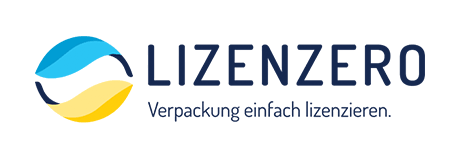VerpackG: What is service packaging?

Since the beginning of 2019, the German Packaging Act (VerpackG) has made companies that bring so-called sales packaging into circulation more accountable for the waste generated in this way. However, the implementation of these obligations continues to cause confusion for many companies. One of the reasons for it are the numerous, formal-legal terms, which are in the law text, which one cannot avoid for the correct default fulfilment however. One of these terms is the already mentioned term "sales packaging": What exactly is hidden behind it? Which packagings belong to it? And which not?
In our blog series on the subject of sales packaging, we examine the three sub-categories of sales packaging and answer basic questions that are essential for understanding the law. We have already explained shipping and product packaging in more detail in recent weeks. Category no. 3, the service packaging, now concludes the section.
So what are the characteristics of service packaging? How does it differ from the other types of packaging? What special features must be observed with regard to the German Packaging Act? You will find all important information in the following article.
Content
- What is a service packaging?
- In comparison: What is the difference between product and shipping packaging?
- Special feature of service packaging with regard to the German Packaging Act
- Overview: These are the obligations of the VerpackG
What is a service packaging?
Packaging that is only filled when the goods are handed over to the end consumer is considered service packaging. They are intended to enable or support the handover in the first place. Service packaging is often used in out-of-home catering: when selling food and beverages in bakery bags, pizza boxes, aluminium trays, disposable dishes or carrier bags. But many other service providers also use this type of packaging to transfer their goods safely, for example in the form of fruit baskets, bowls, carrier bags, pouches or foils from e.g. dry cleaners.

Since the consumer disposes the service packaging at home or in public waste garbage cans and the Packaging Act is concerned precisely with such packaging and it’s recycling, companies must conclude a packaging license for the circulation of service packaging.
Packaging that is used for pre-packaging products or for shipping is not considered service packaging. An example is a pre-packed cookie bag in a large bakery, which is only handed over to the end consumer in the retail store. Since the product nevertheless ends up as waste with the private end consumer, such packaging is, however, product or outer packaging that is also subject to licensing, which is also licensed with a dual system.
In comparison: What is the difference between product and shipping packaging?
A shipping package is used for the shipment of a product and is intended to support a safe transport. The goods reach the consumer via a shipping service provider. The company placing the goods on the market does not hand the goods over directly into the hands of the consumer - otherwise the packaging used would be considered service packaging according to the German Packaging Act (VerpackG).
A product packaging in contrast protects the contained good directly and can - especially in the food sector - extend the shelf life of the product by its composition. Without such packaging, the goods often cannot be handed over. For example, a yoghurt cannot be sold without product packaging (= the yoghurt cup). In contrast to the service packaging, the product packaging is filled with the product in most cases directly in the context of production, whereas with the service packaging some time can pass between the production of the product and its filling.
Regardless of the type of packaging, however, the obligations under the Packaging Act must be fulfilled by the company placing the product on the market for all forms of sales packaging - whether product, shipping or service packaging (an overview of your obligations can be found here).
Special feature of service packaging with regard to the German Packaging Act
In general, every company that puts service packaging into circulation should comply with the VerpackG obligations. However, service packaging is the only exception where the system participation obligation can be transferred to the pre-distributor of the packaging.
Important:
If this is the case, the last distributor (= company filling the packaging) should have it confirmed that the obligation was actually taken over by another party in order to prove that the last distributor is actually responsible.
Update: Since 3 July 2021, the first amendment to the German Packaging Act has been in effect. Among others, the final distributors of service packaging are affected by the new requirements of the amendment. From 1 July 2022, they must register in LUCID of the Central Agency Packaging Register, even if the licensing of the service packaging has already been taken over by the previous distributor. You can find more information on all changes and transition periods in our blog post on the German Packaging Act Amendment 2021.
Overview: These are the obligations of the VerpackG
All companies that put sales packaging into circulation and hand it over to private end consumers are classified as initial distributors of packaging under the Packaging Act. They must comply with a total of three obligations:
- Registration obligation: Affected companies must register once in the publicly accessible packaging register LUCID. This is provided by the Central Agency Packaging Register in order to be able to trace compliance with the obligation. Please refer to our LUCID manual to find out how to register completely.
- Obligation to participate in the system: Through the annual payment of a "license fee" to a dual system (such as Interseroh+ via the online store Lizenzero), which is calculated on the basis of the volume and type of material of the packaging, companies participate in the collection, sorting and recycling of their packaging put into circulation. In order to link the dual system and LUCID, companies must provide the registration number of LUCID to the dual system.
- Data reporting obligation: As a recurring obligation, companies must report the licensed packaging volumes and the name of the dual system in their LUCID account.
Important: The data in LUCID must always correspond to the data of the dual system, as there is a regular data reconciliation with the dual systems.
With such a double data message, typing or transmission errors can quickly occur. We make your work easier: With our volume download for LUCID, you can make the report both with us and with LUCID quickly & easily. Find out more in our blog article "Data reporting made easy" or use the tool directly.



